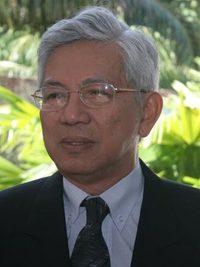SUMMARY
This is AI generated summarization, which may have errors. For context, always refer to the full article.

As I expected, the Philippines and China have sought to tamp down their confrontation around the Scarborough Shoal – officially, Bajo de Masinloc or Panatag to the Philippines, Huangyan to China – by resorting to diplomatic discussions over their conflicting claims in the South China Sea, specifically in the Scarborough area.
However, one can expect incidents between the Philippines and China in this area to recur because of two things.
One is China’s refusal to define its claim to the waters in the South China Sea. It does not even say – through precise coordinates – where exactly are the infamous 9 dashes drawn around that body of water on Chinese maps.
The other factor is the genuine clash of interests between the Philippines and China as far as the South China Sea is concerned.
Like other members of the international community that trade in and/or with East Asia, the Philippines, the ASEAN countries and China have an interest in peace and stability in the South China Sea, the rule of international law, the conservation of the marine environment, and freedom of commercial navigation in and overflight over the high seas (which, for our purposes, include exclusive economic zones).
More particularly, Scarborough Shoal is part of the “strategic depth” that the Philippines feels it needs to its west.
On the other hand, China feels the need to ensure that it controls the South China Sea, so that the Western powers, today led by the United States, do not threaten its security again from the waters to the mainland’s southeast.
At the same time, in the light of this genuine clash of interests, both sides must refrain from holding up hope that the legal and sovereignty disputes will someday be resolved. They will not.
Moreover, in both countries, there are nationalist elements that would oppose any attempt at compromise on territorial and sovereignty issues.

Meanwhile, what to do?
Both sides could reiterate their commitment in the Declaration on the Conduct of Parties in the South China Sea “to resolve their territorial and jurisdictional disputes by peaceful means, without resorting to the threat or use of force, through friendly consultations and negotiations by sovereign states directly concerned, in accordance with universally recognized principles of international law, including the 1982 UN Convention on the Law of the Sea”.
This would ease tensions, which benefit no one, in the area.
They also committed themselves in the Declaration “to exercise self-restraint in the conduct of activities that would complicate or escalate disputes and affect peace and stability including, among others, refraining from action of inhabiting on the presently uninhabited islands, reefs, shoals, cays, and other features”.
The Declaration was issued in November 2002 after negotiations between ASEAN and China and on the occasion of the ASEAN-China Summit meeting.
The Philippines would do well publicly to highlight the fact that the Chinese vessels, when boarded, had corals, large clams and small sharks, presumably taken from the waters around Scarborough Shoal. This would gain the country some international sympathy.
The Philippines could also point out that the shoal has been used as a shelter by Filipino fishermen and served as a target range by Philippine aircraft. The Philippines has planted its flag and built a lighthouse there.
On the other hand, China has claimed “historic rights” to the shoal and invoked the 9-dash, U-shaped line around the South China Sea on Chinese maps. However, China has to define the nature of its claim to the waters within that line if its claim is to be taken seriously. At the same time, it should refrain from waving its superior military might in the Philippines’ face; that only makes it seem like a bully.
Meanwhile, both sides should continue to refrain from mutual military threats, explicit or implicit. The problem is not military but diplomatic. – Rappler.com
The author is a Filipino diplomat and was the Secretary General of Association of Southeast Asian Nations (Asean) from 1998 to 2002. He is currently the Head of the Institute of Southeast Asian Studies in Singapore. He wrote the book “Where in the World is the Philippines?” where a chapter discusses the South China Sea controversy.
Add a comment
How does this make you feel?
There are no comments yet. Add your comment to start the conversation.